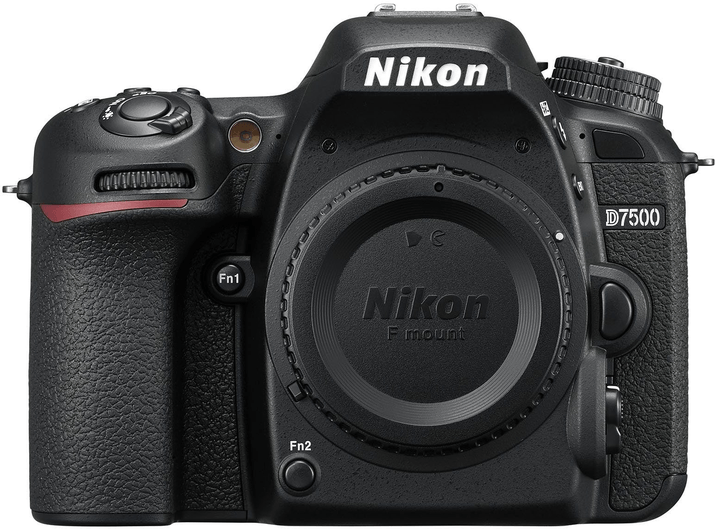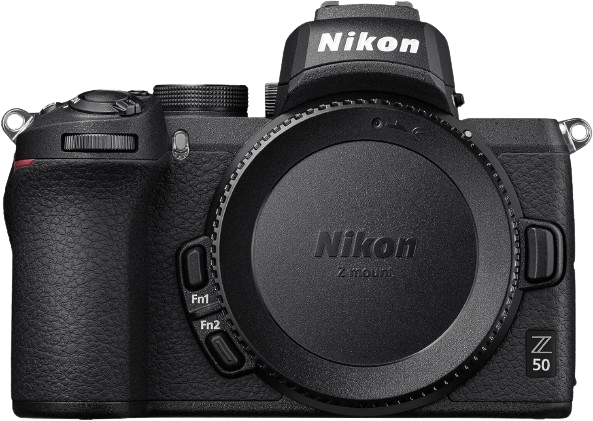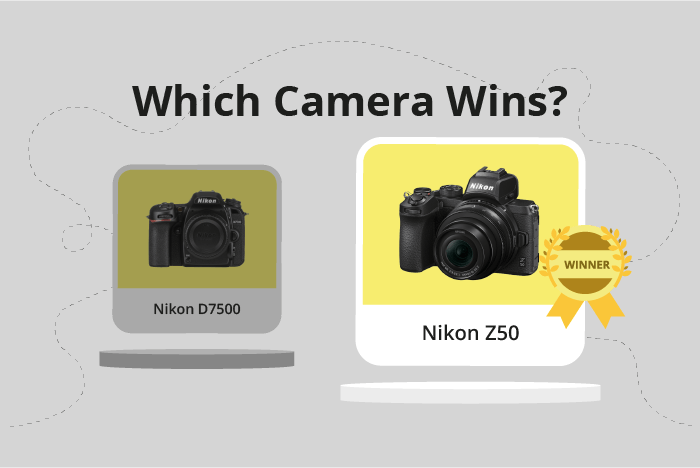Nikon D7500 vs Z50 Comparison
Nikon D7500

Nikon Z50

The Nikon Z50 outperforms the Nikon D7500 with a score of 73/100 versus 70/100. Both cameras share some similarities, such as their announcement years (2017 for D7500 and 2019 for Z50) and launch prices ($1250 for D7500 and $859 for Z50).
The Nikon Z50 excels in size and weight, measuring 127 x 94 x 60mm and weighing 450g, making it more compact and lighter than the D7500, which measures 136 x 104 x 73mm and weighs 720g. This advantage makes the Z50 more portable and convenient for photographers on the go.
However, the Nikon D7500 is a DSLR camera, which means it offers an optical viewfinder for better framing and image stabilization. On the other hand, the Z50 is a mirrorless camera, which usually provides faster autofocus and continuous shooting.
Both cameras showcase their unique strengths, with the Z50 being more compact and lightweight, and the D7500 providing the benefits of a DSLR. Ultimately, the choice depends on the photographer’s preferences and needs.
Nikon D7500 vs Z50 Overview and Optics
The Nikon Z50 outperforms the Nikon D7500 in optics, scoring 72/100 compared to the D7500’s 68/100. Both cameras share some common specifications, including a 20.9-megapixel (D7500) and 21-megapixel (Z50) CMOS sensor, an APS-C sensor size, and no image stabilisation. However, there are key differences that make the Z50 a superior option in terms of optics.
The Nikon Z50 has a faster shooting speed of 11 frames per second, while the D7500 has a shooting speed of 8 frames per second. This difference allows the Z50 to capture fast-moving subjects more effectively. Additionally, the Z50 features a more advanced Expeed 6 processor, which contributes to better image quality and faster processing times.
Another significant advantage of the Z50 is its higher DXOMARK score of 97, compared to the D7500’s score of 86. This higher score reflects the Z50’s superior sensor performance, leading to improved image quality and better low-light performance. Moreover, the Z50 uses the Nikon Z lens mount, which offers a wider range of compatible lenses and better optical performance than the Nikon F DX mount found on the D7500.
While the D7500 does not outshine the Z50 in any specific optical aspect, it still delivers respectable image quality and performance for its price range. Therefore, it remains a viable option for photographers on a tighter budget or those who prefer the Nikon F DX lens system.
Considering these factors, the Nikon Z50 is the clear winner in terms of optics, offering better overall image quality, faster shooting speed, and a more extensive lens selection. The Nikon D7500, though not as strong in optics, still holds its own as a reliable camera for photographers with specific preferences or budget constraints.
Nikon D7500 vs Z50 Video Performance
The Nikon Z50 emerges as the superior camera in terms of video capabilities, boasting a video score of 91 compared to the Nikon D7500’s 70. Both cameras share key specifications, such as 4K maximum video resolution and 3840 x 2160 maximum video dimensions. Additionally, each camera has time-lapse functionality built in, making them suitable for capturing stunning sequences of events over time.
In terms of advantages, the Nikon Z50 excels with a significantly higher maximum video frame rate of 120fps, as opposed to the D7500’s 30fps. This impressive frame rate allows the Z50 to capture smoother, more detailed footage, especially when filming fast-paced action or slow-motion scenes. This major difference contributes to the Z50’s higher video score and makes it a more appealing choice for videographers.
On the other hand, the Nikon D7500 does not offer any specific advantages over the Z50 in the realm of video capabilities. Its lower frame rate and matching video specifications result in a lower video score, making it less attractive for users who prioritize video performance.
Taking these factors into consideration, the Nikon Z50 stands out as the superior camera for video capabilities with its impressive 120fps frame rate, despite sharing several common specifications with the D7500. While the D7500 may be a reliable option for general photography, those seeking to capture high-quality video should opt for the Nikon Z50 for its enhanced performance and higher video score.
Nikon D7500 vs Z50 Features and Benefits
The Nikon Z50 emerges as the winner in the features comparison, scoring 86/100, while the Nikon D7500 scores 83/100. Both cameras share several specifications, including a 3.2-inch screen size, touchscreen capability, flip screen, lack of GPS, and the presence of WIFI and Bluetooth connectivity.
The Nikon Z50 outperforms the D7500 in screen resolution, boasting 1,040,000 dots compared to the D7500’s 922,000 dots. This higher resolution provides a clearer and more detailed display, allowing users to better preview and review images. The improved screen resolution is a significant advantage that contributes to the Z50’s higher feature score.
On the other hand, the Nikon D7500 does not have any specific features that make it better than the Z50. Both cameras share the same set of features, with the Z50’s higher screen resolution being the only notable difference. As a result, the D7500’s lower score is due to the lack of additional advantages compared to the Z50.
Considering the specifications and features of both cameras, the Nikon Z50 is the superior choice due to its higher screen resolution. The Nikon D7500, although not having any unique advantages, remains a solid option for those who may not prioritize screen resolution as highly. Ultimately, the choice between these two cameras comes down to individual preferences and priorities, but the Nikon Z50’s higher feature score reflects its overall better performance in this comparison.
Nikon D7500 vs Z50 Storage and Battery
The Nikon D7500 outperforms the Nikon Z50 in storage and battery with a score of 43/100 compared to the Z50’s 35/100. Both cameras possess one memory card slot and accept SD, SDHC, and SDXC cards. However, the Z50 is UHS-I compatible, offering faster data transfer rates.
The D7500 excels with a battery life of 950 shots, using the EN-EL15a battery. This is significantly greater than the Z50’s 320 shots, powered by the EN-EL25 battery. The longer battery life allows for extended shooting sessions and less frequent battery changes.
The Z50’s advantage lies in its USB charging capability, allowing for convenient charging through a power bank or computer. This feature is absent in the D7500.
Considering the higher score and longer battery life, the D7500 is the stronger choice for storage and battery performance. However, the Z50’s USB charging offers added convenience for on-the-go users.
Alternatives to the Nikon D7500 and Z50
Are you still undecided about which camera is right for you? Have a look at these popular comparisons that feature the Nikon D7500 or the Nikon Z50:

